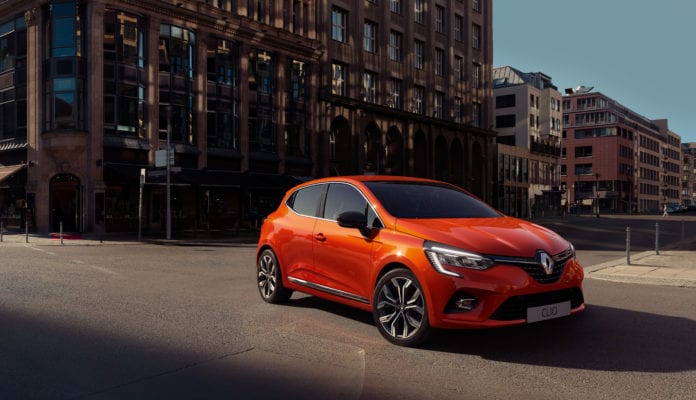Some of the earlier editions of the Clio could be fragile, but as the model has evolved (we’re now on generation four), the build quality and reliability have improved, while the car has got steadily bigger too. As a result the current Clio is surprisingly big, with a big-car feel. The Clio Mk4 arrived in 2012 and got a facelift in 2016, which brought improved connectivity, more safety equipment (both standard and optional) plus an upgraded interior. So while the Clio may seem old, Renault has done a good job of keeping things fresh.

Cabin
The black cabin is sombre but it doesn’t look or feel cheap, despite an abundance of plastics; things were helped by our mid-range Clio getting a very user-friendly seven-inch touch-screen display as standard. The dash is bold and clear, with simple instrumentation which includes a large central digital speedo. The switchgear feels a bit flimsy and it’s the same when you close the doors; it all feels a bit tinny compared with some rivals.
All Clios come with a height-adjustable driver’s seat, while there’s also reach and rake adjustment for the steering wheel – so it’s easy to find a comfortable driving position. More storage space would be welcome but rear-seat space is good for both head and leg room. Unusually, the rear seats are almost as comfy and supportive as those upfront, but the rising window line means the second row might feel a bit claustrophobic for shorter passengers.

Driving
There are five engines available: an 89/109bhp 1.5 dCi diesel, along with 75bhp 1.2, 89bhp 0.9 TCe, 119bhp 1.2 TCe and 200/220bhp 1.6 RS petrol units. All are turbocharged apart from the 75bhp unit. The diesel is the one to go for as it’s so perky, but the 119bhp 1.2T is worth a punt too. The 89bhp 0.9 TCe unit in our test car didn’t feel as zesty as we’d hoped it would; it’s just the job around town, but on the open road you have to change down too much to make progress.
But with light controls, a slick five-speed gearbox plus excellent stability and refinement at motorway speeds, the Clio is an easy car to live with. We’d prefer a more absorbent ride though; our test car wasn’t uncomfortable, but for a city car it was more crashy than we’d like. What’s deeply impressive are the optional LED headlights, a very worthwhile £300 optional extra on the Dynamique Nav.

Costs
The Clio 1.2’s insurance is in group 3 or 4; the TCe 90 sits in groups 6-10, the 1.5 dCi is rated 10-13 and the 1.2 TCe is either 14 or 15. While the diesel is officially rated at up to 85mpg the equivalent figures for the 1.2, 0.9 TCe and 1.2 TCe are 50mpg, 60mpg and 53mpg respectively. Service intervals are every 12 months or 18,000 miles and apart from the TCe 90, all engines have a cam belt which needs to be replaced every six years or 90,000 miles.
We’d avoid the old-school 1.2 and because the running costs of the 1.2 TCe will probably be a touch high, that restricts you to the TCe 90 (as tested here) or the 1.5 dCi which comes in 90 or 110bhp forms. The petrol unit is a bit under-powered whereas the diesel is frugal and has a lot more zip. For £17,000 you can have a 1.5 dCi 90 Dynamique Nav with touch-screen multi-media, alloy wheels, automatic lights and wipers and air-con. Or for £18,250 you could move up to the Dynamique S Nav which adds rear parking sensors, LED headlights, climate control and powered rear windows.


